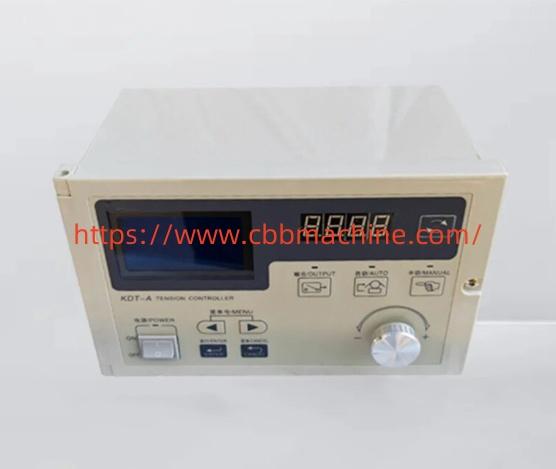Top Applications for Tension Controller Technology by CBBMACHINE

In modern web guiding and winding systems, the Tension Controller plays a critical role in maintaining consistent material flow and optimizing machine performance.
Whether in printing, laminating, textile processing, or paper production, materials are constantly in motion. In these dynamic operations, fluctuations in tension can result in misalignment, wrinkling, or even material breakage. A precision tension control system is not merely a helpful addition—it’s a necessary component to achieve high-quality output and reduce material waste. The tension controller is responsible for regulating the force applied to materials during winding or unwinding, allowing for smooth, uninterrupted movement.
There are generally two types of control methods: open-loop and closed-loop. Open-loop systems work based on preset parameters, suitable for applications where the load remains constant. However, most industrial operations benefit more from closed-loop systems. These systems use real-time feedback from sensors—like load cells or dancer rollers—to continuously adjust motor torque or brake force, ensuring ideal material tension at all times.
Many advanced controllers today are built with digital interfaces, enabling operators to monitor and adjust settings on the fly. Modern models also offer features such as memory storage, PID auto-tuning, and fault detection. These capabilities enhance system responsiveness and make troubleshooting easier, reducing downtime significantly. For automation-heavy industries, integrating a digital tension controller into a centralized system improves overall workflow coordination and boosts efficiency.
Material properties are another important factor. Thicker or stretchable materials require a more sensitive system to prevent damage. In contrast, thin films or delicate foils need very precise low-tension regulation to avoid tearing. Customizing the tension setup according to the application improves performance and prolongs the lifespan of the materials being handled.
Proper installation and routine maintenance of a tension controller are essential to ensure lasting performance. Calibrating the system regularly and checking sensor alignment can help maintain measurement accuracy. Furthermore, understanding how external variables—such as temperature or humidity—affect tension can help operators adjust settings appropriately to preserve output quality.
As industries continue to pursue automation and zero-defect manufacturing, the demand for intelligent tension control continues to grow. These systems not only help companies maintain consistency across production batches but also contribute to energy savings and a safer work environment by reducing mechanical strain and unplanned stops.
To explore more technical details and industry-specific insights about tension control solutions, visit https://www.cbbmachine.com/news/industry-news/tension-controller-types-importance-applications-and-more.html

